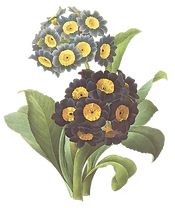Leave the leaves
- Cynthia Thomas
- Oct 25, 2016
- 3 min read
I love to rake leaves – it’s great exercise, it cleans up a messy yard, and if there are young people around, I can still be persuaded to jump my arthritic knees into a fragrant pile. But like most suburbanites, I like leaves best when they get hauled away.
But should you rake up every leaf on your yard?

Only if you want to throw out nature’s answer to insulation, one that literally breaks down and feeds your garden, trees and lawn next season.
Let’s consider – through the natural process of detritus, which does take a little time, leaves are transformed by worms, bacteria and other soil organisms into rich humus, which will then continue to feed trees, shrubs and other plants. Your yard will benefit and so will the environment because you won’t be filling plastic bags with leaves and sending them off to the landfill where it will take years to break down. And even if you have a good alternative, like curb-side removal or hauling them to the woods on a tarp (like I do), you are literally removing this natural fertilizer and then buying costly chemicals to add to your lawn in the spring.
It’s quite a disservice to remove what God has provided. So what’s the alternative for your yard? Mulching.
I’m not saying you have to start saving all your banana peels and coffee grinds – we can discuss ‘composting’ in a winter post– but there is a great way to get your yard to start working for you, it’s call “Leafcycling” and it just requires a mulching lawnmower.
These mowers (or adding a conversion kit to your lawnmower) cuts grass and leaves into small enough particles to distribute back in the lawn with simple mowing. You just have to be careful that you don’t let the grass get too long or the leaves too heavy that when you cut them they leave a “mat” effect which can then smother your grass. Mower-mulching works best when leaves are relatively dry and are no more than one inch deep, so try to start the process when leaves are just starting to fall.
Shredded leaves may be used for other healthy additions to your landscape, too. You can apply the leaves as mulch two to four inches thick under your trees and shrubs, being careful to keep the shredded material away from the trunk and root crown.
As the season progresses and more leaves pile up on the yard, another good alternative is to rake them up onto your flower beds and borders. I don’t do this in the front yard, but in the back and sides along the fence, I pile up a few layers of leaves which help maintain soil temperatures throughout the winter and protect tender root systems.
I don’t usually chop the leaves up to make a mulch blanket, but that could be done with the mulching lawnmower or a weed whacker. Adding this protective layer on your garden beds will prevent frost upheaval caused by frequent thawing and refreezing, which is especially damaging to bulbs, tuberous flowers and some less hardy perennials. What’s more, this leaf mulch pulls triple duty: feeds your plants by recycling nutrients, conserves soil moisture during dry spells and helps prevent the emergence of weeds.
If you don’t like the look of leaf mulch, you can also add your shredded leaves to a compost pile or mulch bin in an out of the way place on the lawn. Keeping the pile wet and turned (once a month, or so) will speed up the decomposition and you can add the nutrient-rich mulch to your garden in the spring. (Make sure the leaves are disease free as you don’t want anything like that transferring.)
Which brings me to my final point, “Experiencecycling.” Just as the previous season’s leaves are left on our lawns, so too are the lessons from life. The temptation is to bag up the fall-off and haul it away. But nature shows us that there are nutrients in every season that just need a little care and distribution to be used in a positive way. One of the most effective ways to avoid repeating the mistakes of the past is to remember them, digest them, appreciate the lessons and find a way to make them useful.
I have found both in life and in the garden, keeping a record is quite helpful for this. While I’m not very disciplined about either one, I have combined them into one journal (well, several now), and it’s a delight to look back and read what I planted last spring or what the weather did and also add personal reflections. Recording these activities – and putting in lessons learned/accomplished/failed – allow me to get the most out of my efforts and identify patterns.
Just as with the snapshot of my daughter in the leaves, remembering links the seasons of our lives.























Comments